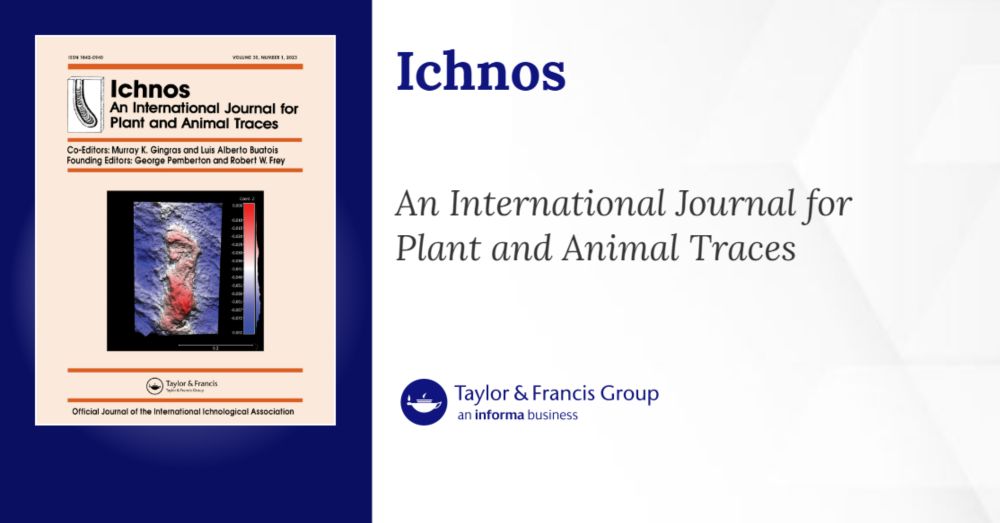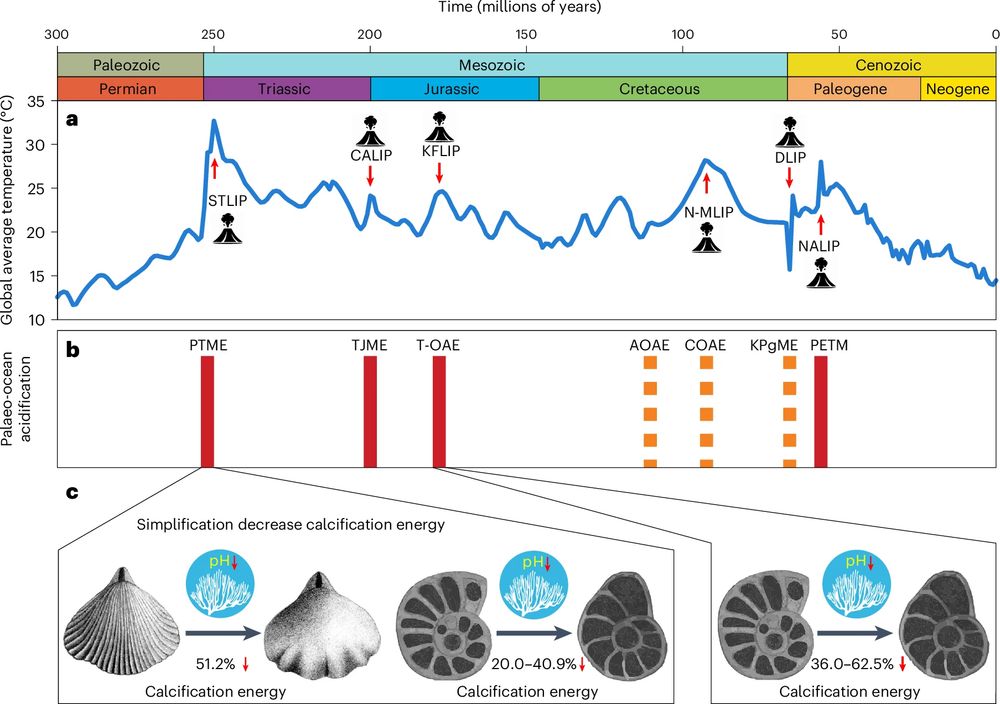
Illustration by Guilherme Gehr
anatomypubs.onlinelibrary.wiley.com/doi/10.1002/...

Illustration by Guilherme Gehr
anatomypubs.onlinelibrary.wiley.com/doi/10.1002/...
Before birds ruled the skies, pterosaurs did. A newly described Australian species — Haliskia peterseni — offers a fresh look at how these ancient reptiles once soared over the Early Cretaceous seas, revealing more about flight, evolution, and life in a vanished world.

Before birds ruled the skies, pterosaurs did. A newly described Australian species — Haliskia peterseni — offers a fresh look at how these ancient reptiles once soared over the Early Cretaceous seas, revealing more about flight, evolution, and life in a vanished world.




www.nature.com/articles/s42...

www.nature.com/articles/s42...
"Our results show that mega-body size is an ancient lamniform trait, with the Australian cardabiodontid being around 6–8 m and over 3 tons."

"Our results show that mega-body size is an ancient lamniform trait, with the Australian cardabiodontid being around 6–8 m and over 3 tons."
Here is the fresh water Dastilbe elongatus. This specimen comes from the Lower Cretaceous (Aptian-Albian) Santana Formation in Serra de Araipe, Brazil. The Santana Formation is well known for its exquisite preservation of pterosaurs fossils.

Here is the fresh water Dastilbe elongatus. This specimen comes from the Lower Cretaceous (Aptian-Albian) Santana Formation in Serra de Araipe, Brazil. The Santana Formation is well known for its exquisite preservation of pterosaurs fossils.
A new euornithine from the Lower Cretaceous (Aptian) of China reveals the first radiation of fish-eating birds
Cretaceous Research 106244
doi: doi.org/10.1016/j.cr...
www.sciencedirect.com/science/arti...
A new euornithine from the Lower Cretaceous (Aptian) of China reveals the first radiation of fish-eating birds
Cretaceous Research 106244
doi: doi.org/10.1016/j.cr...
www.sciencedirect.com/science/arti...

Illustrated for: Cristian D. Benavides-Cabra, José A. Narváez-Rincón, Daniel E. Pomar
Made to go with the study published last week describing a new specimen of 𝘗𝘳𝘰𝘵𝘰𝘭𝘢𝘮𝘯𝘢 𝘳𝘪𝘤𝘢𝘶𝘳𝘵𝘦𝘪 Carrillo Briceño et al., 2019.

Illustrated for: Cristian D. Benavides-Cabra, José A. Narváez-Rincón, Daniel E. Pomar
Made to go with the study published last week describing a new specimen of 𝘗𝘳𝘰𝘵𝘰𝘭𝘢𝘮𝘯𝘢 𝘳𝘪𝘤𝘢𝘶𝘳𝘵𝘦𝘪 Carrillo Briceño et al., 2019.
Scale bars are 1 m and 5 cm x 5 cm.

Scale bars are 1 m and 5 cm x 5 cm.


On display outside Museo Nacional de Ciencias Naturales, Madrid.
#FossilFriday 🌏⚒🔬🧪🌲🌱

On display outside Museo Nacional de Ciencias Naturales, Madrid.
#FossilFriday 🌏⚒🔬🧪🌲🌱

Lovely sedimentary structures and some cute trace fossils - mostly Thalassinoides.
#fossilfriday




Lovely sedimentary structures and some cute trace fossils - mostly Thalassinoides.
#fossilfriday
sciencedirect.com/science/arti...


sciencedirect.com/science/arti...

A description of Arthurdactylus conan-doylei, yes you've read that right.
A description of Arthurdactylus conan-doylei, yes you've read that right.
Link: revistes.ub.edu/index.php/GE...

Link: revistes.ub.edu/index.php/GE...
www.sciencedirect.com/science/arti...

www.sciencedirect.com/science/arti...
Link: www.nature.com/articles/s41...

Link: www.nature.com/articles/s41...
Could be fascinating to learn about their role in seed dispersal and coevolution with early Cretaceous angiosperms. Stay tuned …
🧪 ⚒️ #Paleobio #Geology #EvoBio #Macroecology
Could be fascinating to learn about their role in seed dispersal and coevolution with early Cretaceous angiosperms. Stay tuned …


